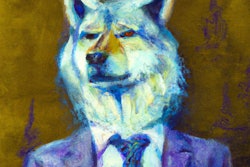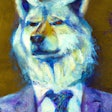
Humanization and anthropomorphism seem like similar concepts, but there are differences that influence how those ideas apply to the pet food industry. Distinguishing between humanization and anthropomorphism has implications for pet food formulation and marketing.
Humanization of pets and their food
Humanization of pets refers to the trend where pet owners treat their animals more like family members, but not necessarily Homo sapiens. This trend has grown considerably over the past decade, driven by changing societal attitudes toward pets and an increasing awareness of animal welfare. Humanization of pet food manifests itself in the quality of ingredients, packaging and manufacturing processes, in a word premiumization.
In the pet food industry, humanization has led to the development and marketing of products that mirror human food trends. Pet food companies offer organic, non-GMO, gluten-free, and sustainably sourced options. Ingredients like quinoa, kale, and blueberries, once rare in pet foods, now appear regularly, reflecting human dietary preferences. Humanization is not merely about providing nutrition; it’s about offering a lifestyle choice that resonates with pet owners’ values and beliefs about health and wellness.
Anthropomorphism in the pet food industry
On the other hand, anthropomorphizing involves attributing human characteristics, emotions, and intentions to animals. This psychological phenomenon occurs when pet owners interpret their pets’ behaviors through a human lens, often assuming pets have similar emotional and cognitive experiences as humans. While this can foster strong bonds between pets and their owners, it can also lead to misunderstandings about animal behavior and needs.
In marketing, anthropomorphizing can be a powerful tool. Advertisements that portray pets with human-like expressions or behaviors can evoke emotional responses from consumers, strengthening their attachment to the brand. For example, a commercial showing a dog "smiling" after eating a particular brand of food can create a memorable and emotionally charged image. However, this approach must be handled carefully to avoid unrealistic expectations about pet care and nutrition.
Distinguishing between humanization and anthropomorphism
Distinguishing between humanization and anthropomorphism can guide pet food manufacturers and marketers. While both trends can be leveraged to enhance brand appeal and customer loyalty, they require different strategies.
Humanization can be addressed by emphasizing the health benefits and ethical considerations of pet food products. This can include highlighting high-quality ingredients, transparent sourcing practices, and scientific research backing the nutritional claims. Anthropomorphizing can be effectively utilized in branding and advertising, using storytelling and imagery that resonate emotionally with pet owners.
While humanization and anthropomorphizing are related, they represent different aspects of the evolving relationship between pets and their owners. By recognizing and strategically addressing both trends, pet food companies can better meet consumer demands and foster deeper connections with their target audience. Understanding these nuances helps in developing products and marketing campaigns that align with the values and expectations of modern pet owners.



















